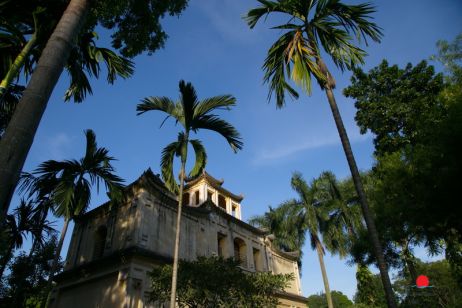Temple of literature
The Temple of Literature – was built in 1070 during the reign of the Ly Dynasty. It is considered Vietnam’s first national university and a sacred place dedicated to Confucius and other revered scholars
Temple of Literature – located in the heart of Hanoi, it is not only one of the city's most beautiful historical sites but also a proud symbol of Vietnam’s deep-rooted respect for education, wisdom, and scholarly achievement. Often referred to as the country’s first university, this sacred complex offers visitors a rare opportunity to walk through the birthplace of Vietnam’s academic and moral traditions. Founded in 1070 under Emperor Lý Thánh Tông, the temple was originally built to honor Confucius, the great Chinese philosopher whose teachings shaped East Asian thought for centuries. In 1076, it was expanded into Quốc Tử Giám, the Imperial Academy, where the sons of kings and aristocrats studied under the guidance of Vietnam’s finest scholars. Over time, the academy opened its doors to exceptional students from across the country who passed difficult regional exams—laying the foundation for a highly respected education system based on merit, character, and service to the nation.
.jpg)
The complex is divided into five main courtyards, each with its own atmosphere and symbolism. As you step through the Tam Quan (Three-Entrance) Gate, you enter a world of peace and reflection. You'll first pass the Four Pillars, which mark the sacred threshold and represent the moral virtues of a scholar. Moving inward, you’ll encounter the Khuê Văn Các (Constellation of Literature Pavilion)—a delicate, red-tiled structure that has become the official symbol of Hanoi and Vietnamese education. Its elegant design, with four wooden pillars and round windows symbolizing the sky, reflects the harmony between intellect and nature. Just beside it is the Thiền Quang Well ( The Well Of Heavenly Clarity ), whose clear water represents purity of thought and clarity of mind.
.jpg)
One of the most significant treasures of the site is the collection of 82 stone steles, mounted on the backs of stone turtles—symbols of wisdom and longevity. These steles record the names, birthplaces, and achievements of those who passed the royal exams between 1442 and 1779. Each one is a monument to learning, perseverance, and national pride. At the far end of the complex is the Thái Học Area, which once housed classrooms, libraries, and dormitories for students. Today, it serves as a museum showcasing ancient educational tools, ceremonial spaces, and exhibitions about the lives of great Vietnamese scholars.
.jpg)
The Temple of Literature is more than just a beautiful example of traditional Vietnamese architecture—it is a living legacy. It’s was surrounded by ancient trees, peaceful gardens, and historic stone pathways, visitors can feel the scholarly spirit that once thrived here. The site is especially popular during the Lunar New Year and exam season, when students come to pray for academic success and write their wishes on calligraphy scrolls. For international visitors, it offers a quiet but profound glimpse into the soul of Vietnamese culture—one shaped not only by struggle and resilience but also by learning and enlightenment.
Tip: Arrive early in the morning or late in the afternoon to enjoy the tranquil atmosphere and golden light for photography. Consider hiring a local guide for deeper insights into the temple’s symbolism and stories.



.jpg)
.jpg)
.jpg)

.jpg)

.jpg)
.jpg)
.jpg)
